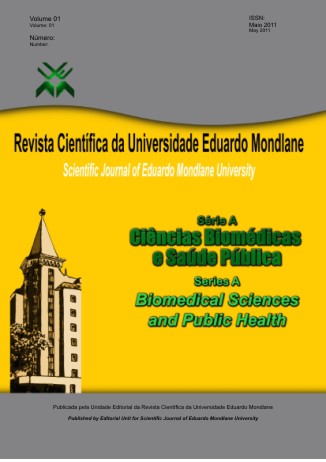MINI REVIEW: the role of homologous recombination in emergence of SARS-CoV-2
Keywords:
Homologous recombination, SARS-CoV-2, recombination in RNA virusesAbstract
During viral recombination, new genetic combinations are generated from the mixing or crossover of two or more nucleic acids from different origins. This process, therefore, requires that more than one virus infects the same cell in order to generate combinations of new viral sequences or chimeric molecules. This process is thought to have an impact in epidemiology, emergence and evolution of RNA viruses. In this mini-review, we highlight the homologous recombination and explain how it might have contributed in the emergence of SARS-CoV-2.
References
AUSTERMANN-BUSCH, S., & BECHER, P. RNA structural elements determine frequency and sites of nonhomologous recombination in an animal plus-strand RNA virus. Journal of virology, v.86, n.13, p.7393–7402, 2012.
JI, W., WANG, W., ZHAO, X., ZAI, J., LI, X. Cross-species transmission of the newly identified coronavirus 2019-nCoV. Wiley: Journal of Medical Virology, v.92, n.4, p.1-8. DOI:10.1002/jmv.25682, 2020.
PÉREZ-LOSADA, M. et al. Recombination in viruses: mechanisms, methods of study, and evolutionary consequences. Infection, genetics and evolution: journal of molecular epidemiology and evolutionary genetics in infectious diseases, v.30.p.296–307,
RABADAN, R., LEVINE, A. J., &KRASNITZ, M. Non-random re-assortment in human Influenza A viruses. Influenza and other respiratory viruses, v.2, n.1, p.9–22, 2008.
SCHEEL, T. K. et el. Productive homologous and non-homologous recombination of hepatitis C virus in cell culture. PLoS pathogens, v.9, n.3, p.1-12, 2013.https://doi.org/10.1371/journal.ppat.1003228
SIMON-LORIERE, E., & HOLMES, E. C. Why do RNA viruses recombine? Nature reviews. Microbiology, v.9, n.8, p.617–626, 2011.
TAUCHER, C., BERGER, A., MANDL, C. W. A trans-Complementing Recombination Trap Demonstrates a Low Propensity of Flaviviruses for Intermolecular Recombination. Journal of Virology, v.84, n.1, p.599-611, 2010.
ZHANG, J., & TEMIN, H. M. Retrovirus recombination depends on the length of sequence identity and is not error prone. Journal of virology, v.68, n.4, p.2409–2414, 1994.
Downloads
Published
How to Cite
Issue
Section
License
Copyright (c) 2020 Revista Científica da UEM: Série Ciências Biomédicas e Saúde Pública

This work is licensed under a Creative Commons Attribution-ShareAlike 4.0 International License.





